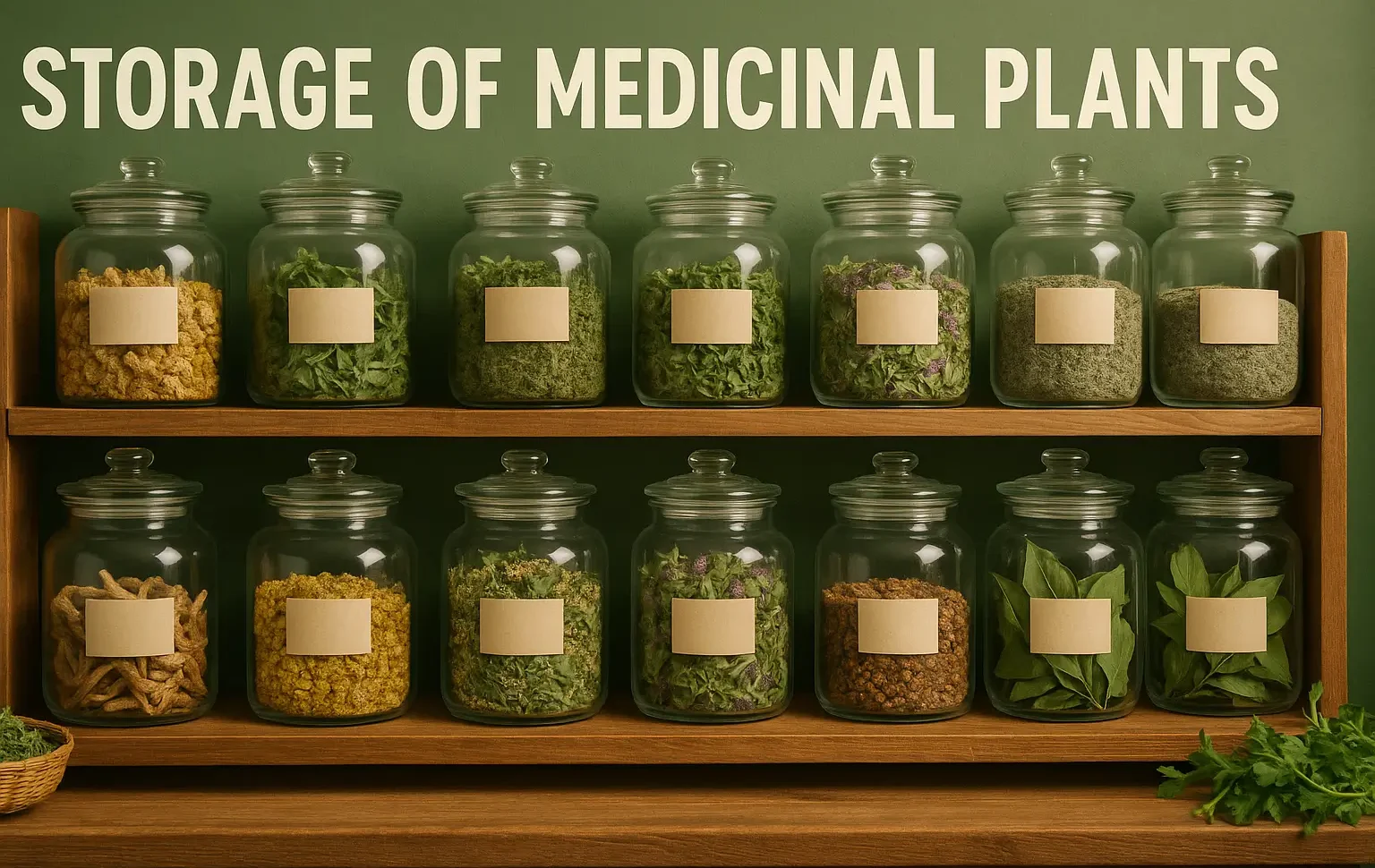- Storage of Medicinal Plants preserves potency by controlling temperature, humidity, and light exposure.
- Proper Storage of Medicinal Plants prevents degradation, contamination, and loss of therapeutic value.
- Proper storage ensures that medicinal plant materials retain their potency and medicinal properties.
Factors Affecting Storage
-
Temperature Control:
- Cool storage (10-15°C) prevents degradation.
- Essential oils (Peppermint, Eucalyptus) require refrigeration.
-
Moisture Control:
- Low humidity (<10
- Silica gel or vacuum-sealed containers for sensitive materials.
-
Protection from Light:
- UV rays degrade alkaloids and flavonoids.
- Store in dark glass bottles or opaque containers.
-
Container Selection:
- Glass, metal, or high-quality plastic containers to prevent contamination.
-
Insect & Pest Control:
- Neem leaves, cloves, or camphor act as natural repellents.
Shelf Life of Stored Medicinal Plants
- Dried Leaves & Flowers: 1–2 years (Chamomile, Tulsi).
- Roots & Rhizomes: 2–3 years (Ginger, Turmeric).
- Barks & Seeds: 3–5 years (Cinchona, Cardamom).
Click Here to Watch the Best Pharma Videos

